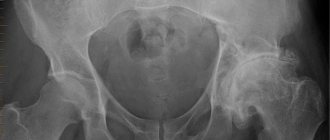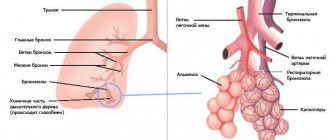A smear on the flora of women is taken for diagnostic purposes; this analysis allows you to detect atypical cells, assess hormonal balance and identify signs of certain gynecological diseases.
Women are prescribed a smear test for preventive purposes, as well as in case of symptoms of diseases of the genitourinary system and in the presence of complaints: itching in the vaginal area, discharge not associated with menstruation, pain in the lower abdomen. Such an analysis is definitely indicated after long-term treatment with antibiotics and during pregnancy planning. The procedure is painless and does not cause harm.
In what cases is the procedure required?
A flora smear is used in gynecology as a screening test for disorders of the vaginal microflora. The analysis must be taken even in the absence of pathological symptoms. Using the test, you can identify initial deviations in the composition of the vaginal microbiota and take timely measures to prevent the development of changes, for example, bacterial vaginosis. A woman should make an appointment with a gynecologist as soon as possible and have a smear test for flora if she has the following complaints:
- discomfort in the genital area (burning, itching, dryness);
- pain in the lower abdomen and/or lower back;
- painful sensations during intimate relationships;
- changes in the characteristics of vaginal secretions (viscous, cheesy, white, yellow, greenish discharge with an unpleasant odor);
- spotting and spotting outside of menstrual periods;
- dysuric disorders (frequent urge, painful urination, changes in urine parameters).
The analysis allows us to exclude infectious causes of deviations and the presence of an active inflammatory process in the vagina. When diagnosing certain sexually transmitted infections, a smear is prescribed for flora and sensitivity to antibiotics (also known as bacterial culture, for example, for gonorrhea). Monitoring the microbiological profile of the mucous membranes of the genital organs is relevant in the following situations:
- preparation for invasive diagnostic procedures;
- preparation for surgery on the pelvic organs;
- monitoring the effectiveness of treatment of gynecological diseases;
- change of sexual partner;
- completing a course of antibiotic therapy;
- planning and preparation for pregnancy.
In these situations, a smear on the flora allows you to check the condition of the female reproductive system, prevent complications of interventions, and eliminate vaginal dysbiosis in a timely manner.
The norm of indicators in a smear for flora
The smear is sent to the laboratory and after the examination, the results are given - letters and numbers written on a piece of paper; ordinary people without medical education are unlikely to understand them. In fact, decoding the analysis is not difficult if the standard indicators are known.
Normal smear values for an adult healthy woman:
- L (leukocytes) – in the urethra and vagina there should be no more than 10 such cells, and in the cervical area less than 30.
- Flat epithelium - the presence of 15 cells in the field of view is allowed; if there are more of them, it means that inflammation is progressing, and a deficiency indicates a hormonal imbalance.
- Mucus – may be present in small quantities.
- Dederlein's rods - there should be a lot of them, a lack of lactobacilli is a sign of impaired vaginal microflora.
- The areas from which the smear is taken are designated by the following letters: U (urethra), V (vagina), C (cervix).
During the analysis, the degree of purity must also be determined. The first degree is diagnosed in absolutely healthy women, their microflora contains 95% lactobacilli, and only single cells of leukocytes and epithelium. The second degree is practically no different from the first, but opportunistic bacteria can be detected in small quantities. The third degree of purity indicates an excess in the number of conditionally pathological bacteria (more than Dederlein bacilli). In the fourth degree, lactobacilli are practically not detected, but there is a lot of bacterial flora, epithelium and leukocytes. The last two options need to be treated.
If the smear samples contain gonococci, trichomonas, fungi of the Candida family or other microorganisms, it means that an inflammatory disease is developing in the patient’s body. In this case, additional tests may be prescribed to select the most effective therapy.
How is the procedure done?
A smear of flora is taken during a gynecological examination. To do this, the doctor uses sterile gynecological speculums, a brush for collecting material and glass slides. The information content of the study depends on how a smear is taken for microflora. The analysis involves examining, under a microscope, stained smears taken from the external opening of the urethra, the vaginal walls in the area of the posterior fornix and the cervical canal. The collection of biomaterial takes place without any unpleasant sensations. The procedure takes 1-2 minutes.
Examination preparation and procedure
This analysis is quite simple. It is performed by a gynecologist or midwife.
A smear is taken in three places:
- from the vaginal mucosa;
- from the base of the urethra (urethra);
- cervix.
The biomaterial is collected using a special plastic spatula. In this case, the mucous membrane itself is not injured. The procedure does not cause pain or severe discomfort.
Diagnosis is not possible during menstruation, as the sample will not be suitable for analysis under a microscope.
The technique is simple, but for its maximum accuracy a number of requirements must be met:
- a week before the study, stop taking medications that may affect the vaginal microflora (for example, antibiotics);
- at least two days before the test, avoid sexual contact;
- exclude the introduction of any drugs into the vagina (suppositories, ointments, solutions) two days before the test;
- Do not take a bath the day before the test, limit yourself to a shower.
In the evening, before the day of collection of biomaterial, it is necessary to carry out hygiene of the external genital organs without the use of detergents.
On the morning of the test, genital hygiene procedures are not performed.
It is not recommended to urinate 2–3 hours before taking a smear, since the material necessary for the study can be washed away from the urethra.
The biomaterial is applied to glass slides and sent to the laboratory.
What is often detected in a smear?
Analysis of smears involves Gram staining them for subsequent examination under a microscope. During the visual examination, the following is determined:
- the ratio of gram-positive and gram-negative flora (lactobacillus, rods and cocci);
- the presence of pathogenic microorganisms (chlamydia, trichomonas, gonococci);
- presence and quantity of blood cells (erythrocytes and leukocytes);
- amount of mucus;
- number of epithelial cells.
Based on the results of the study, the degree of vaginal cleanliness is determined:
- First. All indicators correspond to the norm, which indicates the health of the reproductive tract.
- Second. Variant of the norm. Minor deviations in the composition of the flora. The rest of the indicators are normal.
- Third. There are deviations in the composition of the microflora, as well as a sign of the inflammatory process. Treatment required.
- Fourth. Severe microflora imbalance, predominance of opportunistic microorganisms, or pathogens identified. Vivid signs of the inflammatory process. Treatment required.
Depending on the microscopy picture of the smears, the gynecologist can determine the nature of the pathological process.
Phagocytosis in the study results
The phenomenon of phagocytosis involves the capture and destruction of foreign cells by the body's defense cells. Incomplete phagocytosis in the field of view of a microscope when analyzing a smear means that immune bodies with bacteria inside have been identified. This is the norm for a healthy woman.
Coccal flora
Normally, gram-positive rod flora predominates on the mucous membranes of the genital tract. The predominance of microorganisms of the coccal group means a decrease in local immunity and the emergence of favorable conditions for the development of inflammatory processes. In fact, this is dysbiosis (a disturbance in the composition of the microflora), which can be regarded as an intermediate state between health and pathology, but to confirm the diagnosis it is necessary to clarify the complaints and assess the condition of the mucous membranes of the genital tract during examination by a gynecologist.
Indications for the purpose of the study
A smear on the flora (bacterioscopy)
is a simple, inexpensive, effective method of visual analysis of biological material under a microscope, which allows you to get an idea of the functional state of various organs, assess the presence or absence of an inflammatory process and the degree of its severity. In the laboratory, the smear is stained with special reagents. Different microorganisms show different colors to help identify them. This procedure is called Gram staining. In addition to studying under a microscope, the collected biological material can be used for bacteriological analysis - culture of microflora, which will help to identify pathogens as accurately as possible, their proportions and even sensitivity to certain antibiotics.
Bacteria are divided into gram-positive (Gram (+)) and gram-negative (Gram (-)). Although there are a number of bacteria that do not have a specific Gram stain.
The spectrum of bacteria varies depending on the location in the body (colonization of certain mucous membranes and organs). This is a primary diagnosis that allows you to identify diseases in the early stages and prescribe treatment. The method is widely used by doctors of various specialties when an infectious process is suspected and in the presence of purulent-inflammatory manifestations of the disease. In addition, a smear on the flora is used as part of dispensary examinations in gynecological and obstetric practice.
There are several types of laboratory smear testing for flora.
Gynecological smear for microflora.
This is a general examination that allows you to check the condition of the vaginal mucosa. Additionally, pathologies that are often caused by pathogens are diagnosed - candidiasis, vaginosis, cervicitis. When performing such a bacterioscopic examination, it is possible to diagnose diseases that are sexually transmitted.
Microflora smear in men (urological smear).
Microscopic examination allows you to determine the composition of the microflora of the urethra (urethra) of a man, identify inflammation in the urethra (urethritis), as well as a number of specific pathogens, such as Trichomonas and gonococci.
Indications for the analysis of a gynecological or urological smear are:
- preventive examination;
- pain during urination;
- discomfort or pain in the lower abdomen;
- pathological discharge;
- itching or irritation of the genitals.
- suspicion of infertility;
- any sexually transmitted disease.
A doctor may prescribe this test after long courses of antibiotics to prevent disturbances in the bacterial balance on the mucous membranes of the genital organs.
Microscopy is mandatory for women during pregnancy to exclude inflammatory processes and sexually transmitted infections, which is necessary for normal pregnancy and the birth of a healthy child.
A microflora smear is not prescribed to detect cancer; it is not informative in diagnosing infections such as chlamydia, HIV, herpes and some sexually transmitted diseases.
Smears of other localization
. Indications for the study are infectious and inflammatory diseases of the ENT organs, lungs, eyes (if a gonococcal infection is suspected), skin, soft tissues, etc. A smear on the microflora of the oral cavity is a mandatory test if diphtheria or whooping cough is suspected.
PAP test: what you need to know about the analysis
Indications
Pap test is prescribed:
- for menstrual irregularities (delay, anoremia, too much discharge, etc.);
- difficulties with conception;
- genital herpes;
- taking hormonal medications;
- planning the installation of an intrauterine device;
- assessing the effectiveness of treatment;
- diagnosed erosion or dysplasia;
- the presence of general signs of infection with the papilloma virus (pain in the back and pelvic area, weight loss, fatigue, benign formations on the skin, etc.).
What does the test reveal?
During the examination of the material, the laboratory assistant examines the shape, size and location of epithelial cells, identifying favorable and potentially dangerous cells. A “poor” test result may indicate a high likelihood of cancer, precancerous conditions, or the presence of inflammation. For a more accurate diagnosis, additional studies are usually prescribed. The interpretation of the analysis for cancer cells is given by a laboratory doctor.
Smear test at a gynecologist
If you need specialist help, we invite you to visit our center. At the initial consultation, the doctor determines the range of issues that need to be addressed, conducts the necessary studies according to indications and draws up an individual treatment plan. In addition to the generally accepted methods of treating gynecological diseases (drugs, drugs, etc.), additional, time-tested and effective methods of conservative treatment are used according to indications.
COST OF SERVICES
| Study | Type of analysis | Price |
| Swab for infection | microscopy | 450 |
| For “hidden infections” | PCR | 450 |
| For bacterial culture (dysbacteriosis) | sowing | 1 750 |
| For HPV VKR 16/18 | PCR | 550 |
| For microflora + sensitivity to antibiotics | sowing | 1 750 |
| For gardnerella | PCR | 450 |
| For thrush (candidiasis) | PCR | 450 |
| Taking a smear (genitals, urethra, rectum, throat) | 1 localization | 350 |
Today in the clinic diagnostics are carried out:
| Bezyuk Laura Valentinovna Obstetrician-gynecologist, gynecologist endocrinologist, specialist in gynecology of children and adolescents. Ultrasound. Contour plastic | Vakhrusheva Diana Andreevna Obstetrician-gynecologist, endocrinologist, ultrasound diagnostics. Aesthetic gynecology and anti-aging intimate medicine. |
| APPOINTMENT WITH A GYNECOLOGIST | WHERE TO GET TESTED |
When are smears prescribed during pregnancy?
Flora analysis is recommended to be carried out at the planning stage, as well as during registration, at 30 weeks and immediately before birth. In some cases, the analysis is carried out more often, for example, a certificate of smear results is needed before hospitalization. Expectant mothers need this research because hormonal changes in the body of pregnant women often reduce immunity, which provokes infections and inflammation. A smear will allow you to timely diagnose the problem, begin treatment and give birth to a healthy baby.
It is best to do a Pap test during the planning stage. If it has not been carried out previously, the analysis is prescribed during pregnancy.
References
- Simonova, E.V., Ponomareva, O.A. The role of normal microflora in maintaining human health. Sib. honey. zhurn., 2008. - No. 8.
- Chernova, N.I., Perlamutrov, Yu.N., Petrova, I.S. Diagnosis and treatment of vaginal microbiome disorders: is it that simple? Gynecology, 2014. - No. 4.
- Korotyaev, A.I. Medical microbiology, immunology and virology. - SPB: Special. lit., 1998. - 580 p.
- Nelyubova, O.I., Talnikova, E.E., Morrison, A.V. Skin microbiome and its role in normal and pathological conditions. Russian Journal of Skin and Venereal Diseases, 2021. - No. 2.
General information about the study
A comprehensive examination of stool samples reveals eggs, cysts, and sometimes adults of all types of parasites. Recommended on a regular basis (1-2 times a year) for people in contact with domestic and wild animals, workers in farmland and wastewater treatment plants. It is important to conduct research on children due to their low level of hygiene.
To detect a parasitic infection, microscopic examination of stool is carried out using the native smear method, using the methods of Fulleborn, Kalantaryan, Krasilnikov. Due to the cyclical nature of the life of parasites, to exclude a false negative result, the test for helminths must be performed three times with a break of 3 to 5 days.
Prevention of helminthiasis
It is important to undergo examination when the first symptoms of helminthic infestation appear. Parasites are extremely dangerous to human health. Can lead to the development of serious diseases. Children experience growth retardation and the absorption of nutrients is disrupted. Infection during pregnancy increases the manifestation of toxicosis. There is a risk of the parasite penetrating the placenta. It can damage the fetus and cause miscarriage.
You can protect yourself by following simple hygiene standards. Wash your hands, vegetables, and fruits thoroughly. Follow the rules of food preparation, exclude from the diet meat and fish that have not passed sanitary control. Drink only purified water, not directly from natural sources. Latrine areas must be equipped with disinfection systems so as not to contaminate the soil. Pets must undergo veterinary control regularly.






